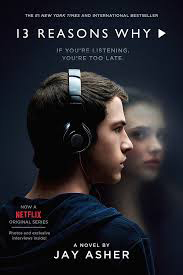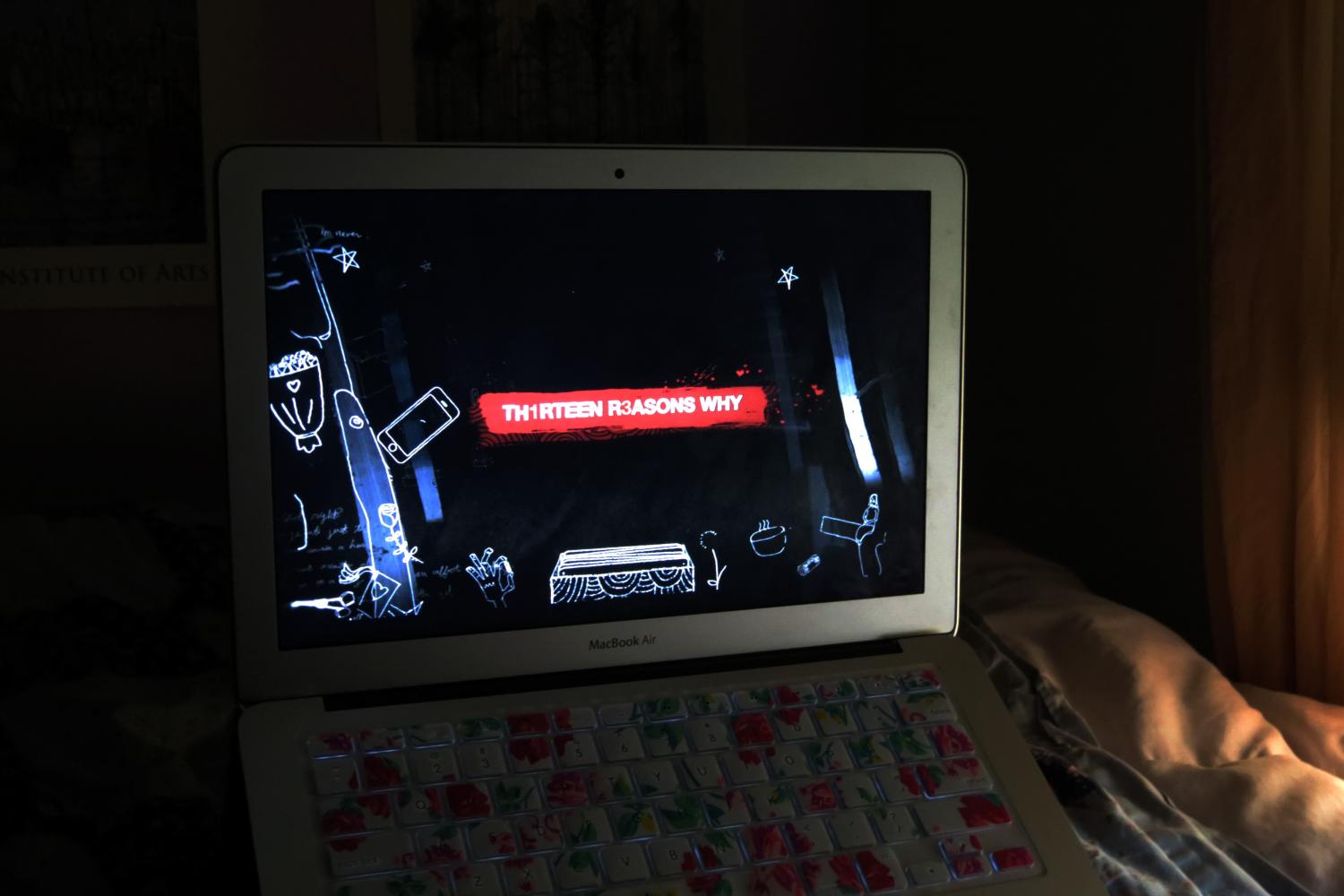13 Reasons Why
May 25, 2017
This Netflix series starts both a conversation and controversy over teens’ mental health and suicide awareness.
Romanticizing the truth

Netflix has made binge watching shows incredibly easy, but the content is not always so mindless. “Thirteen Reasons Why,” a show based on a book by Jay Asher, produced by Selena Gomez, has become a popular Netflix original series. Spring break gave high schools the chance to rapidly watch the newest, teen drama.
The major critique of the show sounds the glorification of suicide and the romanticized image of teen substance abuse, mental health, and rape. Mental health and the glorification of suicide Sophomore Aubrey Mathews said, “The show is just too graphic and triggering with the entirety of the mental health problem. I seriously did not think it added to the show itself.”
The main character, Clay, believes he was truly in love with Hannah Baker, but love is not the remedy to suicide and depression. “It’s toxic to promote the idea that a group of minors could be wholly responsible for the death of a girl with an untreated mental illness,” said Junior Genevieve Belote. This aside, the show has many students binge watching every episode.
“13 Reasons Why” features thirteen tapes that are passed to people who Hannah blames for her death. These revenge tapes sparked controversy and made many students question the realism of the show. “I think this is the most cliche show ever cause the message of show is what high school is like times two. Everything in the show is too much,” said Mohamed Omar. Teens are receiving tapes of horrible things they have done and seem unaffected until they may actually face consequences.
In the final episode of the show, Hannah finally seeks help from a professional school counselor. She pleads with the counselor asking if her rapist would go to jail if she came forward with her story. He continually gets distracted by his phone and gives no hope to Hannah. In fact, his advice is simply to move on from the trauma unless she has evidence. Steve Banks, one of Eden Prairie’s social workers said the show’s counselor displayed, “negligence, and I am glad it was just acting. It was poorly portrayed and I do not agree with how he handled it at all.”
Banks also believes that Eden Prairie would have handled it differently by validating her feelings and said, “Part of depression is when you hear things it is a little bit distorted. Some of the feeling you have are a little bit distorted. They are not based on facts, but people don’t understand that or don’t believe that.”
The show opens a dialogue if nothing else Belote said. There is a vast array of topics displayed in the show which can help parents begin to discuss and talk with their child. An email was sent from Eden Prairie schools to give parents talking points with their child about “Thirteen Reasons Why.” Some include why suicide is never a heroic or romantic action and also includes the intense Hollywood portrayal of mental illness.
Senior Emily Pederson took a positive message from the show and said, “You might not even realize what everyone has to deal with.” The show follows the lives of the people Hannah Baker blamed for her suicide to not only capture their reactions, but different problems students deal with.
Aubrey Mathews said the whole show felt too unrealistic to be set in an actual high school and “the situations Hannah faces may come up, but this is not every student’s experience with mental health and is not accurate when it comes to how everyone handles it.”
Sending mixed messages
“Thirteen Reasons Why” a compelling, dark, 13-episode series recently made its debut on Netflix. Based on Jay Asher’s novel, the producers of the series had intentions to spark caution and awareness about a controversial topic and portray the implications of suicide. Yet in reality, it polarized viewers, leaving some to believe it departed from the main idea of the novel and romanticized suicide. Although the novel and series both intended to spread the same message–treat people kindly for you never know what battles they may face–it wasn’t received in such a positive manner by all.
Senior Annika Peterson had read the novel prior to watching the series. Although she found no issue with the novel, of the series she said, “The novel focused primarily on Hannah’s internal struggles with depression and anxiety, whereas the show focused more on the blame of students around her.”
Peterson is not alone in this sentiment. Some argue the series’ adaptation, which was produced by Selena Gomez and Brian Yorkey, takes a major departure from the novel’s main idea. Sophomore Megha Paracha felt the series did an injustice to the novel’s overall message and meaning: “I think the whole point of the series was to get audience members. The book took the right initiative by trying to gain awareness rather than seek out viewers.”
The novel covers Hannah Baker’s story within 256 pages.While it depicts Hannah’s depression and mental illnesses as the major standpoint of the story, viewers fail to hear it once throughout the Netflix series, according to people critical of the show. Instead, viewers are led to blame the classmates behind it rather than the illness Hannah Baker truly faces. Many believe this fault in plot potentially takes away from the true meaning behind the story itself.
“I think the show would have greatly benefited by creating a more realistic depiction of what suicidal thoughts are like rather than investing so much time within the other character’s feelings,” said Peterson.
The premise of the series surrounded the same overall plot, but at times drifted from Hannah’s story to the rest of the characters. The novel was primarily focused upon Hannah Baker as the protagonist and the 13 recorded tapes of her explaining the events and individuals that led to her death. The tapes were then handed off by a close friend to each individual after her suicide, implying to some that her death was more of a game than a tragedy.
“As someone who struggles with mental health issues, it made me sick to see her turning her suicide into some kind of game for people,” said Peterson.
Senior Elena Page not only disagreed with the series’ focus of plot, but also disagreed with the way Hannah was portrayed in the series: “Hannah romantically victimized herself to depression and suicide.”
Published in 2007, the novel casually introduces topics such as alcohol, rape and partying but with a less prominent focus. Meanwhile, the Netflix series truly depicts the modernization of a millennial world through social media, frequent drug use, and current slang.
Some, including Page, argue this adaptation creates an over-dramatized version of actual high school and creates an unnecessary appeal to gain a wider audience.
“No one was actually grieving throughout the episodes and none of it was realistic,” said Page of the Netflix series. “The book was written with such a stronger message.”
Differentiating, Some students on the other hand, say the Netflix series can help teens develop empathy.
“After watching the show, I felt more aware of my surroundings. Whether I refrain from making a sarcastic comment or decide to not spread that one rumor, I realize that the things I say could just add up for someone who’s going through a really hard time,” said Senior Kellie Fuhs.
Despite their differences, both stories, on film and on paper, undoubtedly prompt important conversations that were meant to be talked about much earlier than the year of 2017. In fact, the buzz of “Thirteen Reasons Why” debut on film has pushed the novel to the top 10 nation’s best sellers list. It has remained in the top 100 teen novels since 2007; a stance rarely taken by such a modern book.
Some have not praised the conversation the series and novel brings about; school districts throughout Canada have banned discussion of both storylines deeming it “disturbing” and “harmful” to young minds. Ever since its publication, the book has been one of the most banned or challenged in school districts across the United States.
Although the series sparked an array of commentary by all, its publicity clearly created a desire for more. Recently announced on Instagram by executive producer Selena Gomez, a season 2 will be renewed in 2018 including thirteen new episodes. Along with the renewal comes new boundaries due to its controversy; all episodes will now be rated as MA (mature audience). Additionally, each episode will have a content warning at the beginning warning of graphic depictions of suicide and rape.
In the midst of the controversy, fans still continue to be positively affected by the series and novel: “Everyone should watch “Thirteen Reasons Why” because it is eye-opening and scary realistic. Many teenagers can connect to the characters personal battles because we’re all currently doing the same in our lives. It’s so important to understand the seriousness of suicide and this show takes a small glimpse at its reality,” said senior Charlotte Smith

